Acupuncture is renowned for pain relief for just about any type of pain, so why should labour be different? The great news is that it’s not! Acupuncture is fantastic for relief of labour pains. The trouble is that it can be difficult to implement, especially if the mother-to-be wants to be moving around. The solution? Acupuressure. And the best news is that this can be done by anyone, even a partner with relatively little training.
For effective from labour pains, Debra Betts outlines a few tips and tricks.
- Start manipulations as early as possible
- Use firm and penetrating pressure, light rubbing or massaging on these points just won’t do.
- Use only points that provide relief, those that provide more pain or discomfort should not be used. These points may change as labour progresses.
Labour Pains – Commonly Used Points
GB 21: used for its descending action, especially in the first and second stages of labour and also to encourage milk flow. This is also a trigger point according to Western Medicine and is used to relieve stress and muscle tension. When we see someone giving a shoulder massage, this is often a point naturally targeted.
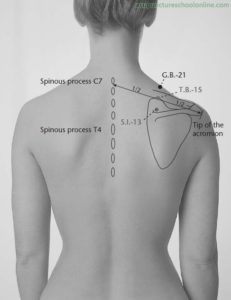
UB 32: used for its effects of promoting dilation and preventing lumbo-sacral pain, this point tends to have an effect on reducing the strength of contractions. It is located at the sacral spine.

KI 1: this point is especially used for women who are stressed, anxious or upset. This is a very soothing point. Located on the bottom of the foot, Betts suggests putting a motion sickness band around the foot and walking on it, allowing for constant activation.

LI 4: this is one of the most powerful pain relief points on the body, during labour and in general. It is also used to establish regular contractions and move the baby’s body down the birth canal. This point is often one of the first points that comes to mind when people think about acupuncture, it is located on the hand, in the fleshy part between the thumb and first finger.
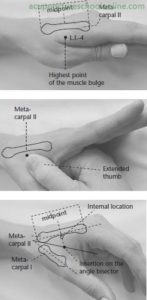
SP 6: often used in cases where there is delayed, prolonged or difficult labour, this can aid the cervix in dilation and is often used in cases where there are afterpains. Located along the inside of the leg, posterior to the tibia, in the depression approximately 3 fingerbreadths up from the medial malleolus.
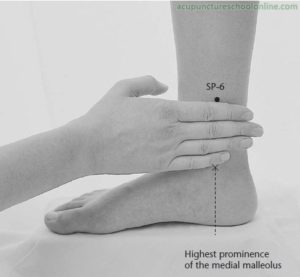
UB 60: this is a general point to relieve labour pains. You will find this point on the outside of the leg, between the Achilles tendon and the lateral malleolus.
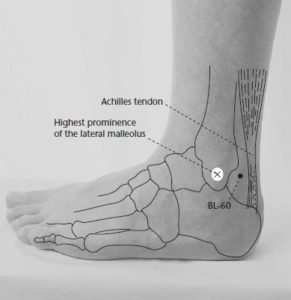
UB 67: most often used to turn the fetus, this point can also be used to ensure progression of labour and labour with back pain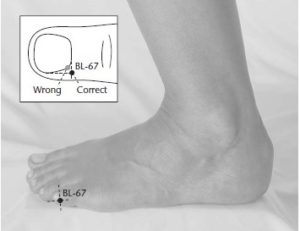 .
.
PC 6: this point is mostly used at the beginning of pregnancy to help curb nausea and vomiting, but can also be used for general nausea and vomiting, even during labour.
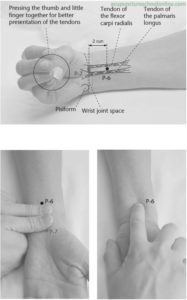
Traditional Chinese Medicine and Acupuncture can help make labour a smooth and beautiful experience. Debra Betts has a great book called The Essential Guide to Acupuncture in Pregnancy & Childbirth. Or visit her website: http://acupuncture.rhizome.net.nz/ ,it is worth taking a look at. If you have any questions or comments on how else Chinese Medicine and Acupuncture can help you, or for upcoming courses on Chinese Medicine and Women’s Health, please contact us.
Caroline Prodoehl, R.TCMP
References
Betts, Debra. (2006). The Essential Guide to Acupuncture in Pregnancy & Childbirth. Eastland Press. Seattle Washington.

